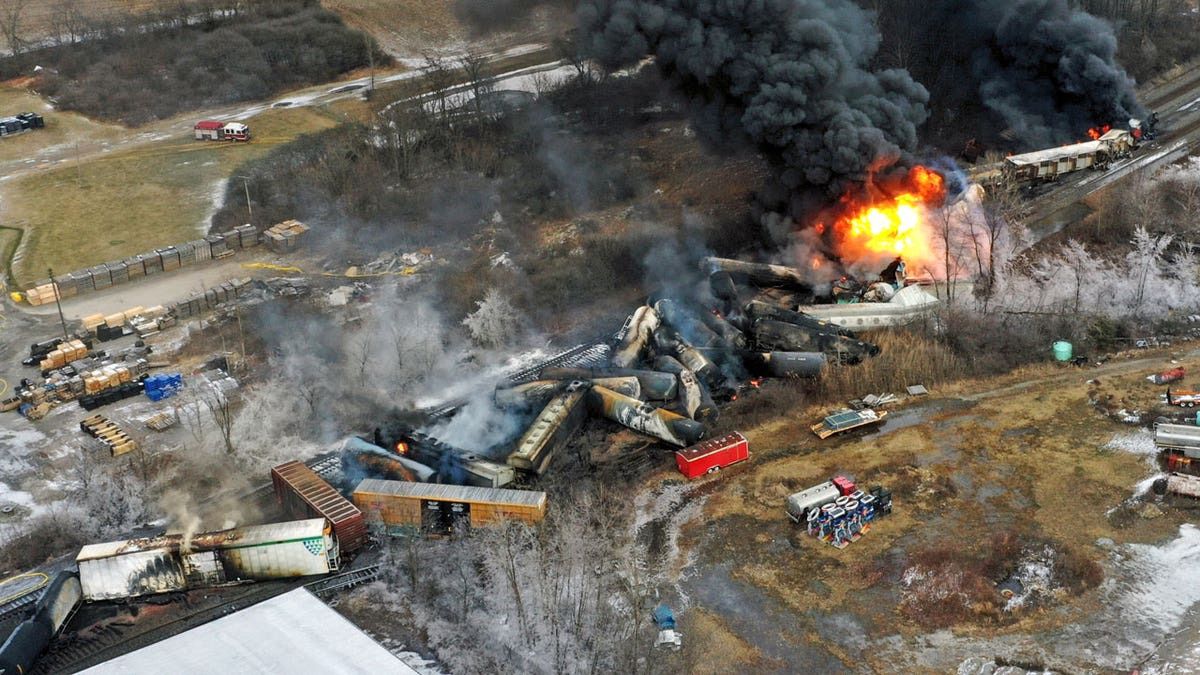The fire chiefs who led the initial response to the devastating train derailment in East Palestine, Ohio, this past February have emphasized the urgent need for more comprehensive hazardous materials training for firefighters. While acknowledging the unprecedented nature of the disaster, they believe enhanced training is crucial for future incidents.
The National Transportation Safety Board (NTSB) held a field hearing in East Palestine to investigate the circumstances surrounding the Norfolk Southern derailment and the subsequent decision to release and burn toxic vinyl chloride from the derailed tank cars. This controversial decision, while aimed at preventing a potentially catastrophic explosion, resulted in a massive plume of black smoke over the town and forced the evacuation of numerous residents.
Despite assurances from officials regarding the safety of the air and water, residents remain concerned about the potential long-term health consequences. East Palestine Fire Chief Keith Drabick defended the decision to release and burn the chemicals as the "least bad option" under the circumstances. However, he and other first responders who testified at the hearing concurred that firefighters, especially volunteers who were the first to arrive at the scene, require more extensive training in handling hazardous materials.
Ohio officials revealed that volunteer firefighters receive only 36 hours of initial training for certification, significantly less than the 200 hours required for professional firefighters. Moreover, this training does not include any hazardous materials instruction. The fire chiefs also highlighted communication challenges during the initial response, as radios used by different departments were incompatible. Furthermore, accessing crucial information about the train's cargo was delayed due to the first responders' lack of access to the AskRail app, which provides real-time data on hazardous materials transported by rail.

The image above depicts the scene in East Palestine, Ohio, following the train derailment. The cleanup efforts, overseen by the Environmental Protection Agency and Ohio officials, involve removing contaminated soil and water. Norfolk Southern has pledged over $62 million towards the town's recovery, with estimated total costs approaching $400 million. Insurance is expected to cover a portion of these expenses, and other responsible parties may also be required to contribute.
The NTSB's preliminary report indicates that an overheated bearing on one of the railcars likely caused the derailment. However, the final report is not expected for another year. Investigators have gathered video evidence showing sparks or fire beneath one of the rail cars miles before the derailment occurred, raising questions about early detection and prevention.
This incident, along with other recent derailments, has sparked national concern about railroad safety and led to proposed reforms in Congress. Norfolk Southern CEO Alan Shaw has testified before the Senate, apologizing for the derailment and pledging to rectify the situation in East Palestine. Meanwhile, Democratic members of the House Committee on Oversight and Accountability have expressed frustration over Norfolk Southern's refusal to provide requested documents related to its use of trackside detectors and recent operational decisions. The railroad has cited the ongoing NTSB investigation as the reason for withholding these documents, an explanation rejected by the committee Democrats.
Comments(0)
Top Comments